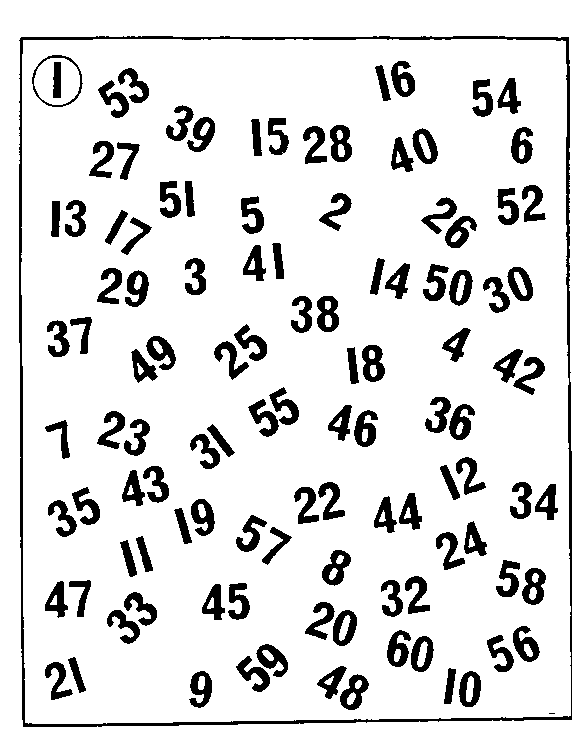
The Department of Agricultural Education
 The University of Arizona
The University of Arizona
![]()
|
The Department of Agricultural Education
|
|
CAN YOU FOLLOW DIRECTIONS? This is a timed test. You will have three (3)
minutes. 1. You are not to share your answers with
anyone.

FLOWCHART FOR DEVELOPMENT OF
| ||||||||||||||||||||||||||||||||||||||||||||||||||||||||||||||||||||||||||||||||||||||||||||||||||||||||||
Steps of Procedure |
Key Points |
Illustrations/
|
Evaluating
Points |
|||
Criteria |
Possible Points |
Student |
Teacher |
A. Objectives:
1. When provided with the necessary tools and equipment the student will set up, prepare the weld metal and make a weld bead with rod on aluminum sheet following standard safe operating procedures.
2. Each student will complete one sample weld specimen of two weld beads using the TIG process with maximum of 30 minutes practice time and earn a minimum score of 75 points.
B. Introduction:
The most desirable process for fabricating aluminum parts by welding is with Tungston Inert Gas process. The skill of making a satisfactory weld bead with this equipment is basic to making high quality butt and fillet welds
Tools
Materials
Reference
TIG welding machine
Welding gloves
Welding helmet, No 10 lens
Ceramic cup, assorted sizes
Stainless Steel Brush1/16"x2"x4" al. strip
1/16"AWS5356 al filler rod
Argon gasChap. 20,
Arc Welding Lessons
TIG data chart
Steps of Procedure |
Key Points |
Illustrations/
|
A. Preparing the Metal |
||
|
1. Clean the aluminum sheet |
a. Degrease-use waste cloth and solvent a. Use stainless steel brush
|
|
B. Preparing the Equipment |
||
| 3. Set the current selector switch 4. Set the Hi-Freq switch 5. Open main valve on inert gas bottle fully 6. Connect the ground clamp to work 7. Attach power supply cable to source 8. Turn welder power switch on 9. Adjust Argon gas flow, cfh. |
a. Set to "AC" a. Set to "Switch" a. Open slowly b. Double seated valve a. Use 230 volt/single phase a. turn on torch switch b. Turn flowmeter valve c. Read top of ball |
|
C. PREPARING THE TORCH ELECTRODE |
||
| 10. grind end of new electrode to taper 11. Install "cup" and "collet" of proper size 12. Secure electrode in torch head extending ľ" from end of cup |
a. make length 5 times diameter a. Use TIG data chart a. Tighten collet retainer snuggly |
|
D. FORMING THE BALL |
||
| 13. Set machine amperage 14. Position electrode over copper block with ľ" arc length 15. Hold torch in hand like a pencil 16. Lower helmet over eyes 17. Press torch switch to strike arc 18. Release torch switch when ball is formed |
a. Use 70 amps AC a. Hold torch in gloved hand a. Have index finger on switch b. Hold vertical a. Make ball ĺ dia. of electrode |
|
E. FORMING THE PUDDLE |
||
| 19. Re-adjust electrode in collet 20. Strike arc on work piece 21. Establish "working" angle of torch 22. Hold approximately 1/8" arc length 23. Preheat starting point 24. Watch for a bright clear puddle to form |
a. Position ball 1/8" beyond
end of cup a. Donít touch electrode to work piece a. Tip 75 degree angle to piece a. Move torch in very tight circles over starting point |
|
F. FEEDING THE ROD |
||
| 25. Hold rod between third and fourth
finger 26. Position rod 15 degree angle to work piece and to leading edge of puddle 27. Add rod by touching molten puddle 28. Remove rod and bring arc back to leading edge of puddle 29. Feed rod with thumb and forefinger |
a. Use glove on hand a. At the same time move arc to rear puddle a. Avoid touching the electrode |
|
G. FORMING THE BEAD |
||
| 30. Alternately feed rod into leading
edge of puddle 31. Form distinct ripples by alternate dipping rod and advancing arc 32. Check continually for proper progress of bead |
a. Keep bead 3/16" in width a. Puddle bright and fluid b. Puddle correct width c. No bailing up of rod |
|
The Operational Lesson Plan:
There are many important agricultural practices and skills where the value for students is essentially manipulative or manual skill (psychomotor) development. Whenever this ability and "know how" is necessary in order for the students to be able to do or perform the proactive and/or skill according to standard specifications, these lessons should be taught from an operational point of view. The students should learn to do these "jobs" efficiently, and the teacher's objectives for this lesson plan are (1) to develop the ability to do the job correctly, and (2) to develop the ability to perform a skill or practice satisfactorily.
Developing questions for study, making reading assignments, using class discussions or recitations based upon assigned study are costly, time-consuming, and inefficient for his type of teaching. Furthermore, lecturing on material of this nature is even worse. "One learns to do by doing" applies in teaching operational lessons. Too much time is wasted in trying to teach operational jobs by talking about them. Students should be shown how to do such skills and then be given ample practice time to learn how to do them.
The most important teacher preparation for operational lesson plans is to make a complete "step by step" analyses which outlines an up-to-date, economical and efficient way for doing the job or performing the skill. These "Job Operation Sheets" should then be followed by the teacher when giving the demonstration.
When conducting demonstrations, the following steps are suggested:
Step 1. Teacher does and tells
Step 2. Student does-teacher tells -OR -teacher does-students tells -OR -students does and tells
Step 3. Students do under supervisionA suggested format for developing operational lesson plans is shown following:
FORMAT OF A LESSON PLAN FOR AN OPERATIONAL LESSON
Area:
Unit:
Lesson: (Number and title)
COMPETENCY(IES) TO BE TAUGHT:
Need:
List the important reasons lesson is taught.
LESSON OBJECTIVES:
1. Development of skill to do a job or perform a task satisfactorily according to standard specifications.
INTRODUCTION:
1. Why is the lesson to be taught?
2. Bring out the importance of skill/job/exercise.
3. Show examples of use of the skill/job/exercise.PROCEDURE:
1. Demonstration:
a. Teacher demonstrates how to perform skill as outlined on the job operation sheet.
b. Teacher explains clearly each step or operation and gives reasons why.
c. Student should demonstrate how to perform skill while explaining each step.2. Supervised Practice:
a. Students practice skill under supervision of teacher.
b. Teacher assists students.3. Summary:
a. Review lesson based upon objectives.
b. Summarize the steps involved and review safety when appropriate.
c. Involve students in developing a concenses statement which concludes the lesson and identifies ways to use the skill.
d. When appropriate, write the conclusion on the board/overhead.4. Application:
a. As students complete skill or practice, assign a production job or exercise to be completed according to specifications.
5. Evaluation:
a. Teacher includes psychomotor development activities on unit examinations.
b. Teacher scores the quality of work of the job or exercise performed by student according to specifications.REALIA :
List specific references, instructional materials, job operation sheets, tools and equipment to be used in teaching the lesson.
SCIENCES/MATH CONCEPTS REINFORCED:
List specific concepts contained in the lesson.
Questions or problems regarding this web site should be directed to billye@ag.arizona.edu.
Copyright © 2000 Department of Agricultural Education. All rights reserved.
|